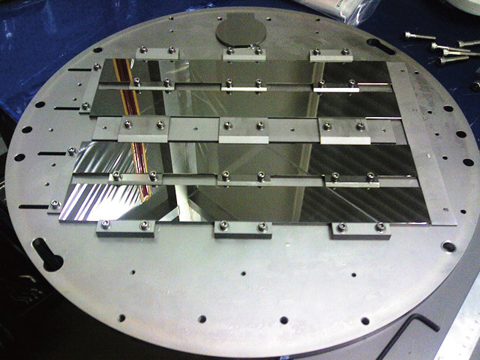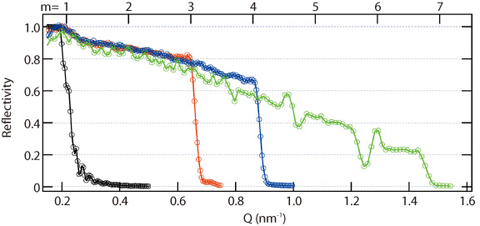
Fig.4-38 Photograph of the substrate holder (500 mmφ) of the IBS instrument installed in JAEA and the float glass substrates (50×400 mm) on it.

Fig.4-39 The measured neutron reflectivities of the supermirrors fabricated with the IBS instrument
Neutron scattering is a useful source of information about the positions, motions, and magnetic properties of condensed matters. Neutron scattering is important because it provides valuable information that can not be obtained using other techniques such as X-ray scattering. In order to study a wide range of problems in material and life science with a much higher neutron intensity, a new spallation neutron source (Japan Proton Accelerator Research Complex, "J-PARC") is now under construction. The development of high performance neutron supermirrors with high reflectivity and large m, the ratio of the effective critical angle of the supermirror to that of natural nickel (Ni), is important for the J-PARC project since it greatly increases the available neutron intensity. For example, supermirror neutron guide with m=k would bring about a gain factor of k2 in the neutron flux at the end of the guide when it is used instead of the Ni guide. Neutron supermirrors consist of alternating layers of two materials with different refractive indices for neutrons.
We have developed neutron supermirrors by employing the ion beam sputtering (IBS) technique because it enables the production of layers with high density and small grain size. An ion polishing technique is combined with IBS deposition in order to suppress the interface roughness, which is an important problem in the fabrication of supermirrors with large m, and the efficiency of this combined IBS technique has been confirmed. Although the IBS technique produces high quality layers, its disadvantage is that the deposition area and rate are relatively small. Based on the results of our development, a new IBS instrument with a large effective deposition area of 500 mm diameter (Fig.4-38) has been designed and installed at the JAEA. The difference in the deposition rate over the entire deposition area has been confirmed to be less than 4%.
Ni/titanium(Ti) supermirrors with m=3 and 4, for use as neutron guides in the J-PARC project, have been fabricated using the IBS instrument. The total number of layers is 403 and 1201, respectively. The neutron reflectivities of mirrors with m=3 and 4 at their critical angles are 82% and 66%, respectively (Fig.4-39). Ni/Ti supermirror with m=6.7, which is a record breaking critical angle, has also been fabricated. The total number of the layers is 8000. The neutron reflectivity at the critical angle is 23% (Fig.4-39). Thus, we can contribute to the J-PARC project in which the production of neutron guides, benders, and other devices using supermirrors is planned.